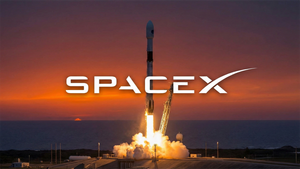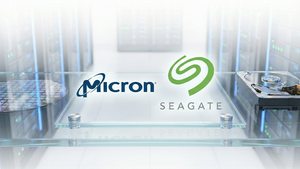
PHOENIX, AZ – November 3, 2025 – ON Semiconductor (NASDAQ: ON) has once again demonstrated its robust position in the evolving semiconductor landscape, reporting better-than-expected financial results for the third quarter of 2025. Despite broader market headwinds and a slight year-over-year revenue decline, the company's strong performance was significantly bolstered by burgeoning demand from the artificial intelligence (AI) sector, underscoring AI's critical reliance on advanced power management and sensing solutions. This outperformance highlights ON Semiconductor's strategic pivot towards high-growth, high-margin markets, particularly those driven by the relentless pursuit of energy efficiency in AI computing.
The company's latest earnings report serves as a potent indicator of the foundational role semiconductors play in the AI revolution. As AI models grow in complexity and data centers expand their computational footprint, the demand for specialized chips that can deliver both performance and unparalleled power efficiency has surged. ON Semiconductor's ability to capitalize on this trend positions it as a key enabler of the next generation of AI infrastructure, from advanced data centers to autonomous systems and industrial AI applications.
Powering the AI Revolution: ON Semiconductor's Strategic Edge
For the third quarter of 2025, ON Semiconductor reported revenue of $1,550.9 million, surpassing analyst expectations. While this represented a 12% year-over-year decline, non-GAAP diluted earnings per share (EPS) of $0.63 exceeded estimates, showcasing the company's operational efficiency and strategic focus. A notable highlight was the significant contribution from the AI sector, with CEO Hassane El-Khoury explicitly stating the company's "positive growth in AI" and emphasizing that "as energy efficiency becomes a defining requirement for next-generation automotive, industrial, and AI platforms, we are expanding our offering to deliver system-level value that enables our customers to achieve more with less power." This sentiment echoes previous quarters, where "AI data center contributions" were cited as a primary driver for growth in other business segments.
ON Semiconductor's success in the AI domain is rooted in its comprehensive portfolio of intelligent power and sensing technologies. The company is actively investing in the power spectrum, aiming to capture greater market share in the automotive, industrial, and AI data center sectors. Their strategy revolves around providing high-efficiency, high-density power solutions crucial for supporting the escalating compute capacity in AI data centers. This includes covering the entire power chain "from the grid to the core," offering solutions for every aspect of data center operation. A strategic move in this direction was the acquisition of Vcore Power Technology from Aura Semiconductor in September 2025, a move designed to bolster ON Semiconductor's power management portfolio specifically for AI data centers. Furthermore, the company's advanced sensor technologies, such as the Hyperlux ID family, play a vital role in thermal management and power optimization within next-generation AI servers, where maintaining optimal operating temperatures is paramount for performance and longevity. Collaborations with industry giants like NVIDIA (NASDAQ: NVDA) in AI Data Centers are enabling the development of advanced power architectures that promise enhanced efficiency and performance at scale. This differentiated approach, focusing on system-level value and efficiency, sets ON Semiconductor apart in a highly competitive market, allowing it to thrive even amidst broader market fluctuations.
Reshaping the AI Hardware Landscape: Implications for Tech Giants and Startups
ON Semiconductor's strategic emphasis on intelligent power and sensing solutions is profoundly impacting the AI hardware ecosystem, creating both dependencies and new avenues for growth across various sectors. The company's offerings are proving indispensable for AI applications in the automotive industry, particularly for electric vehicles (EVs), autonomous driving, and advanced driver-assistance systems (ADAS), where their image sensors and power management solutions enhance safety and optimize performance. In industrial automation, their technologies are enabling advanced machine vision, robotics, and predictive maintenance, driving efficiencies in Industry 4.0 applications. Critically, in cloud infrastructure and data centers, ON Semiconductor's highly efficient power semiconductors are addressing the surging energy demands of AI, providing solutions from the grid to the core to ensure efficient resource allocation and reduce operational costs. The recent partnership with NVIDIA (NASDAQ: NVDA) to accelerate power solutions for next-generation AI data centers, leveraging ON Semi's Vcore power technology, underscores this vital role.
While ON Semiconductor does not directly compete with general-purpose AI processing unit (GPU, CPU, ASIC) manufacturers like NVIDIA, Advanced Micro Devices (NASDAQ: AMD), or Intel Corporation (NASDAQ: INTC), its success creates significant complementary value and indirect competitive pressures. The immense computational power of cutting-edge AI chips, such as NVIDIA's Blackwell GPU, comes with substantial power consumption. ON Semiconductor's advancements in power semiconductors, including Silicon Carbide (SiC) and vertical Gallium Nitride (vGaN) technology, directly tackle the escalating power and thermal management challenges in AI data centers. By enabling more efficient power delivery and heat dissipation, ON Semi allows these high-performance AI chips to operate more sustainably and effectively, potentially facilitating higher deployment densities and lower overall operational expenditures for AI infrastructure. This symbiotic relationship positions ON Semi as a critical enabler, making powerful AI hardware viable at scale.
The market's increasing focus on application-specific efficiency and cost control, rather than just raw performance, plays directly into ON Semiconductor's strengths. While major AI chip manufacturers are also working on improving the power efficiency of their core processors, ON Semi's specialized power and sensing components augment these efforts at a system level, providing crucial overall energy savings. This allows for broader AI adoption by making high-performance AI more accessible and sustainable across a wider array of applications and devices, including low-power edge AI solutions. The company's "Fab Right" strategy, aimed at optimizing manufacturing for cost efficiencies and higher gross margins, along with strategic acquisitions like Vcore Power Technology, further solidifies its position as a leader in intelligent power and sensing technologies.
ON Semiconductor's impact extends to diversifying the AI hardware ecosystem and enhancing supply chain resilience. By specializing in essential components beyond the primary compute engines—such as sensors, signal processors, and power management units—ON Semi contributes to a more robust and varied supply chain. This specialization is crucial for scaling AI infrastructure sustainably, addressing concerns about energy consumption, and facilitating the growth of edge AI by enabling inference on end devices, thereby improving latency, privacy, and bandwidth. As AI continues its rapid expansion, ON Semiconductor's strategic partnerships and innovative material science in power semiconductors are not just supporting, but actively shaping, the foundational layers of the AI revolution.
A Defining Moment in the Broader AI Landscape
ON Semiconductor's Q3 2025 performance, significantly buoyed by the burgeoning demand for AI-enabling components, is more than just a quarterly financial success story; it's a powerful signal of the profound shifts occurring within the broader AI and semiconductor landscapes. The company's growth in AI-related products, even amidst overall revenue declines in traditional segments, underscores AI's transformative influence on silicon demand. This aligns perfectly with the escalating global need for high-performance, energy-efficient chips essential for powering the burgeoning AI ecosystem, particularly with the advent of generative AI which has catalyzed an unprecedented surge in data processing and advanced model execution. This demand radiates from centralized data centers to the "edge," encompassing autonomous vehicles, industrial robots, and smart consumer electronics.
The AI chip market is currently in an explosive growth phase, projected to surpass $150 billion in revenue in 2025 and potentially reach $400 billion by 2027. This "supercycle" is redefining the semiconductor industry's trajectory, driving massive investments in specialized AI hardware and the integration of AI into a vast array of endpoint devices. ON Semiconductor's success reflects several wider impacts on the industry: a fundamental shift in demand dynamics towards specialized AI chips, rapid technological innovation driven by intense computational requirements (e.g., advanced process nodes, silicon photonics, sophisticated packaging), and a transformation in manufacturing processes through AI-driven Electronic Design Automation (EDA) tools. While the market is expanding, economic profits are increasingly concentrated among key suppliers, fostering an "AI arms race" where advanced capabilities are critical differentiators, and major tech giants are increasingly designing custom AI chips.
A significant concern highlighted by the AI boom is the escalating energy consumption. AI-supported search requests, for instance, consume over ten times the power of traditional queries, with data centers projected to reach 1,000 TWh globally in less than two years. ON Semiconductor is at the vanguard of addressing this challenge through its focus on power semiconductors. Innovations in silicon carbide (SiC) and vertical gallium nitride (vGaN) technologies are crucial for improving energy efficiency in AI data centers, electric vehicles, and renewable energy systems. These advanced materials enable higher operating voltages, faster switching frequencies, and significantly reduce energy losses—potentially cutting global energy consumption by 10 TWh annually if widely adopted. This commitment to energy-efficient products for AI signifies a broader technological advancement towards materials offering superior performance and efficiency compared to traditional silicon, particularly for high-power applications critical to AI infrastructure.
Despite the immense opportunities, potential concerns loom. The semiconductor industry's historical volatility and cyclical nature could see a broader market downturn impacting non-AI segments, as evidenced by ON Semiconductor's own revenue declines in automotive and industrial markets due to inventory corrections. Over-reliance on specific sectors, such as automotive or AI data centers, also poses risks if investments slow. Geopolitical tensions, export controls, and the concentration of advanced chip manufacturing in specific regions create supply chain uncertainties. Intense competition in emerging technologies like silicon carbide could also pressure margins. However, the current AI hardware boom distinguishes itself from previous AI milestones by its unprecedented scale and scope, deep hardware-software co-design, substantial economic impact, and its role in augmenting human intelligence rather than merely automating tasks, making ON Semiconductor's current trajectory a pivotal moment in AI history.
The Road Ahead: Innovation, Integration, and Addressing Challenges
ON Semiconductor is strategically positioning itself to be a pivotal enabler in the rapidly expanding Artificial Intelligence (AI) chip market, with a clear focus on intelligent power and sensing technologies. In the near term, the company is expected to continue leveraging AI to refine its product portfolio and operational efficiencies. Significant investments in Silicon Carbide (SiC) technology, particularly for electric vehicles (EVs) and edge AI systems, underscore this commitment. With vertically integrated SiC manufacturing in the Czech Republic, ON Semiconductor ensures robust supply chain control for these critical power semiconductors. Furthermore, the development of vertical Gallium Nitride (vGaN) power semiconductors, offering enhanced power density, efficiency, and ruggedness, is crucial for next-generation AI data centers and EVs. The recent acquisition of Vcore power technologies from Aura Semiconductor further solidifies its power management capabilities, aiming to address the entire "grid-to-core" power tree for AI data center applications.
Looking ahead, ON Semiconductor's technological advancements will continue to drive new applications and use cases. Its intelligent sensing solutions, encompassing ultrasound, imaging, millimeter-wave radar, LiDAR, and sensor fusion, are vital for sophisticated AI systems. Innovations like Clarity+ Technology, which synchronizes perception with human vision in cameras for both machine and artificial vision signals, and the Hyperlux ID family of sensors, revolutionizing indirect Time-of-Flight (iToF) for accurate depth measurements on moving objects, are set to enhance AI capabilities across automotive and industrial sectors. The Treo Platform, an advanced analog and mixed-signal platform, will integrate high-speed digital processing with high-performance analog functionality onto a single chip, facilitating more complex and efficient AI solutions. These advancements are critical for enhancing safety systems in autonomous vehicles, optimizing processes in industrial automation, and enabling real-time analytics and decision-making in myriad Edge AI applications, from smart sensors to healthcare and smart cities.
However, the path forward is not without its challenges. The AI chip market remains fiercely competitive, with dominant players like NVIDIA (NASDAQ: NVDA) and strong contenders such as Advanced Micro Devices (NASDAQ: AMD) and Intel Corporation (NASDAQ: INTC). The immense research and development (R&D) costs associated with designing advanced AI chips, coupled with the relentless pace of innovation required to optimize performance, manage heat dissipation, and reduce power consumption, present continuous hurdles. Manufacturing capacity and costs are also significant concerns; the complexity of shrinking transistor sizes and the exorbitant cost of building new fabrication plants for advanced nodes create substantial barriers. Geopolitical factors, export controls, and supply chain tensions further complicate the landscape. Addressing the escalating energy consumption of AI chips and data centers will remain a critical focus, necessitating continuous innovation in energy-efficient architectures and cooling technologies.
Despite these challenges, experts predict robust growth for the semiconductor industry, largely fueled by AI. The global semiconductor market is projected to grow by over 15% in 2025, potentially reaching $1 trillion by 2030. AI and High-Performance Computing (HPC) are expected to be the primary drivers, particularly for advanced chips and High-Bandwidth Memory (HBM). ON Semiconductor is considered strategically well-positioned to capitalize on the energy efficiency revolution in EVs and the increasing demands of edge AI systems. Its dual focus on SiC technology and sensor-driven AI infrastructure, coupled with its supply-side advantages, makes it a compelling player poised to thrive. Future trends point towards the dominance of Edge AI, the increasing role of AI in chip design and manufacturing, optimization of chip architectures for specific AI workloads, and a continued emphasis on advanced memory solutions and strategic collaborations to accelerate AI adoption and ensure sustainability.
A Foundational Shift: ON Semiconductor's Enduring AI Legacy
ON Semiconductor's (NASDAQ: ON) Q3 2025 earnings report, despite navigating broader market headwinds, serves as a powerful testament to the transformative power of artificial intelligence in shaping the semiconductor industry. The key takeaway is clear: while traditional sectors face cyclical pressures, ON Semiconductor's strategic pivot and significant growth in AI-driven solutions are positioning it as an indispensable player in the future of computing. The acquisition of Vcore Power Technology, the acceleration of AI data center revenue, and the aggressive rationalization of its portfolio towards high-growth, high-margin areas like AI, EVs, and industrial automation, all underscore a forward-looking strategy that prioritizes the foundational needs of the AI era.
This development holds profound significance in the annals of AI history, highlighting a crucial evolutionary step in AI hardware. While much of the public discourse focuses on the raw processing power of AI accelerators from giants like NVIDIA (NASDAQ: NVDA), ON Semiconductor's expertise in power management, advanced sensing, and Silicon Carbide (SiC) solutions addresses the critical underlying infrastructure that makes scalable and efficient AI possible. The evolution of AI hardware is no longer solely about computational brute force; it's increasingly about efficiency, cost control, and specialized capabilities. By enhancing the power chain "from the grid to the core" and providing sophisticated sensors for optimal system operation, ON Semiconductor directly contributes to making AI systems more practical, sustainable, and capable of operating at the unprecedented scale demanded by modern AI. This reinforces the idea that the AI Supercycle is a collective effort, relying on advancements across the entire technology stack, including fundamental power and sensing components.
The long-term impact of ON Semiconductor's AI-driven strategy, alongside broader industry trends, is expected to be nothing short of profound. The AI mega-trend is projected to fuel substantial growth in the chip market for years, with the global AI chip market potentially soaring to $400 billion by 2027. The increasing energy consumption of AI servers will continue to drive demand for power semiconductors, a segment where ON Semiconductor's SiC technology and power solutions offer a strong competitive advantage. The industry's shift towards application-specific efficiency and customized chips will further benefit companies like ON Semiconductor that provide critical, efficient foundational components. This trend will also spur increased research and development investments in creating smaller, faster, and more energy-efficient chips across the industry. While a significant portion of the economic value generated by the AI boom may initially concentrate among a few top players, ON Semiconductor's strategic positioning promises sustained revenue growth and margin expansion by enabling the entire AI ecosystem.
In the coming weeks and months, industry observers should closely watch ON Semiconductor's continued execution of its "Fab Right" strategy and the seamless integration of Vcore Power Technology. The acceleration of its AI data center revenue, though currently a smaller segment, will be a key indicator of its long-term potential. Further advancements in SiC technology and design wins, particularly for EV and AI data center applications, will also be crucial. For the broader AI chip market, continued evolution in demand for specialized AI hardware, advancements in High Bandwidth Memory (HBM) and new packaging innovations, and a growing industry focus on energy efficiency and sustainability will define the trajectory of this transformative technology. The resilience of semiconductor supply chains in the face of global demand and geopolitical dynamics will also remain a critical factor in the ongoing AI revolution.
This content is intended for informational purposes only and represents analysis of current AI developments.
TokenRing AI delivers enterprise-grade solutions for multi-agent AI workflow orchestration, AI-powered development tools, and seamless remote collaboration platforms.
For more information, visit https://www.tokenring.ai/.








